Biotechnology
Biotechnology is a field of science that harnesses biological systems, organisms, or derivatives to develop innovative technologies and products for various applications. It involves manipulating living organisms at the molecular and cellular levels to create new solutions in agriculture, medicine, and industry. In agriculture, biotechnology contributes to crop improvement through genetic modification, enhancing resistance to pests, or improving nutritional content. In medicine, it plays a crucial role in developing drugs, vaccines, and therapies by understanding and modifying biological processes. Industrial biotechnology utilizes microorganisms to produce biofuels, enzymes, and other valuable products. Overall, biotechnology integrates Biology and technology to address challenges and improve our lives by leveraging the inherent capabilities of living organisms.
Applications of Biotechnology
Biotechnology involves the use of biological systems, organisms, or derivatives to develop and create new products or processes. Applications range from medicine and agriculture to industry and environmental management, utilizing genetic engineering, molecular biology, and other techniques to improve or create useful products and services. Here we have discussed the application of Biotechnology in Agriculture and Medicine.
Application of Biotechnology in Agriculture
Biotechnology in agriculture involves using biological systems, organisms, or derivatives to enhance crop production, improve crop quality, and develop sustainable farming practices. These applications contribute to increased agricultural productivity, reduced environmental impact, and the development of crops better suited to meet the challenges of a changing climate. Some applications includes:
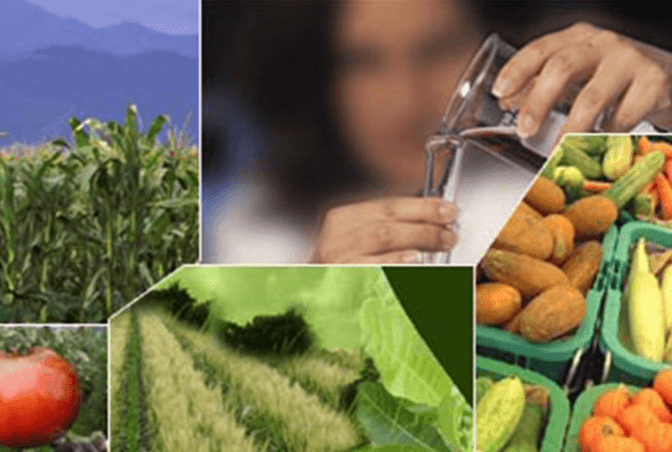
- Genetically Modified (GM) Crops: Introducing specific genes into crops to confer desirable traits such as resistance to pests, diseases, or tolerance to environmental conditions, ultimately improving yield.
- Crop Improvement: Using techniques like tissue culture and genetic engineering to develop crops with enhanced nutritional content, longer shelf life, and better adaptability to varying environmental conditions.
- Pest and Disease Management: Developing genetically engineered crops with built-in resistance to pests or crop diseases, reducing the need for chemical pesticides and minimizing environmental impact.
- Precision Agriculture: Utilizing biotechnological tools like DNA markers to identify and select plants with desired traits, enabling more precise and efficient breeding strategies.
- Bio-Fertilizers: Harnessing beneficial microorganisms to enhance nutrient availability in the soil, promoting healthier plant growth, and reducing the reliance on synthetic fertilizers.
- Bioremediation: Employing plants and microorganisms to detoxify soil contaminated with pollutants, offering an eco-friendly solution to soil rehabilitation.
- Vaccines for Livestock: Using biotechnology to develop vaccines for livestock, preventing diseases, and ensuring healthier animals in agriculture.
Green Revolution
The Green Revolution, which began around the 1950s, focused on boosting agriculture. In recent times, biotechnology has played a role in agriculture by using genetic engineering. This involves modifying the genes of crops to make them more resistant to pests, diseases, and environmental challenges. These genetically modified organisms (GMOs) contribute to increased crop productivity and sustainability. Essentially, the Green Revolution aimed at improving farming practices, and biotechnology has become a tool in this effort by enhancing the genetic makeup of crops to make them more resilient and productive.
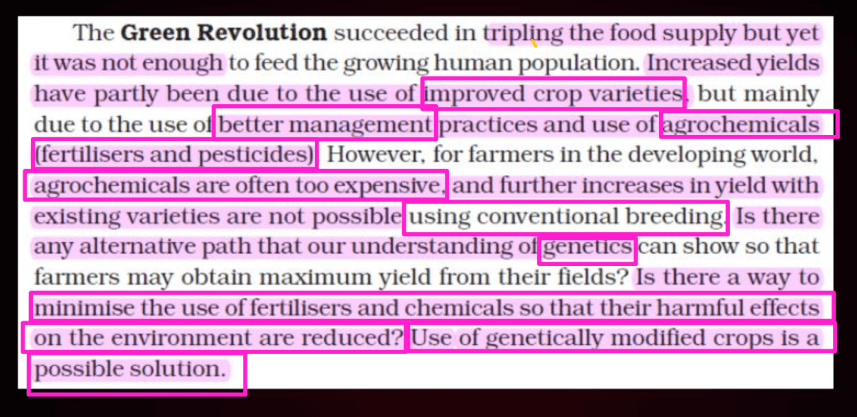
Genetic Modification
Genetic modification has led to various advancements in agriculture and other fields. Below we have discussed a few examples of genetic modification. These examples showcase the diverse applications of genetic modification in agriculture, addressing issues such as pests, nutritional content, and environmental challenges.
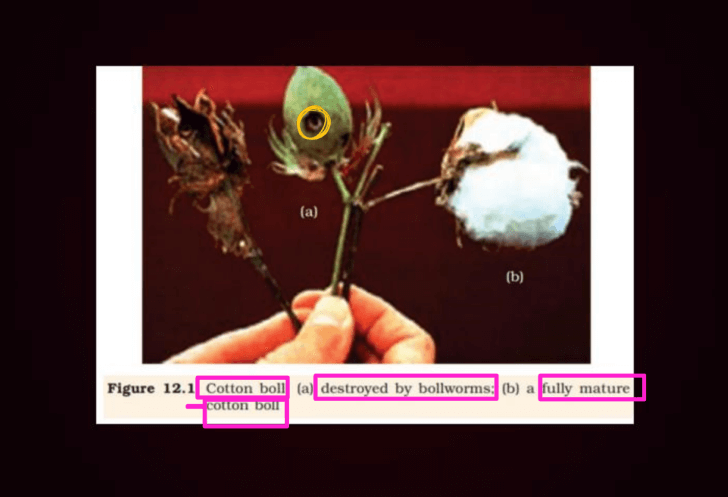
- Bt Cotton: Bt Cotton is a type of cotton plant that has been genetically modified to produce a protein called Bacillus thuringiensis (Bt). This protein acts as a natural pesticide, protecting the cotton plant from certain harmful insects. By having this built-in protection, farmers can reduce the need for chemical pesticides, making the cultivation of cotton more environmentally friendly and economically sustainable.
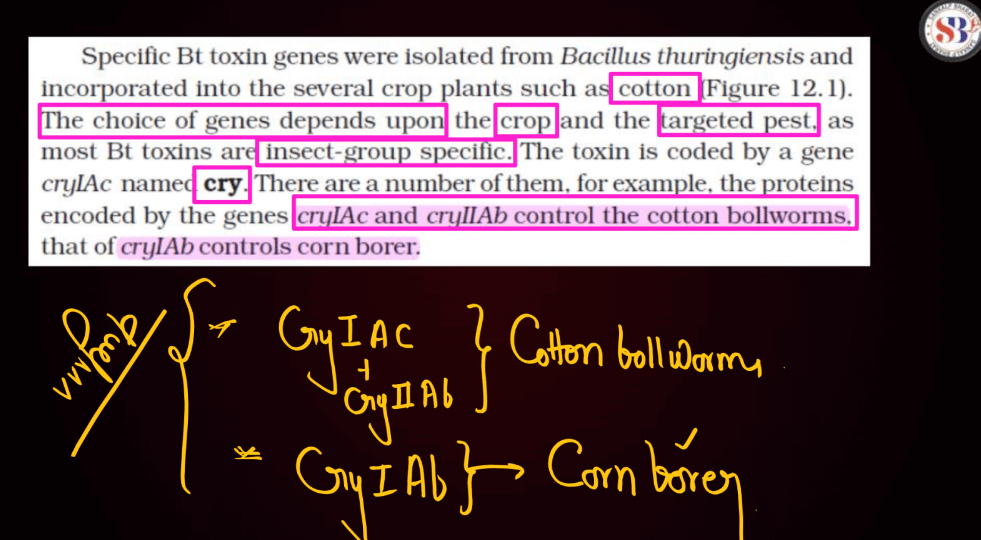
- Roundup Ready Crops: Crops like soybeans and corn are modified to tolerate the herbicide glyphosate, allowing effective weed control.
- Genetically Modified (GM) Papaya: Developed to resist the papaya Ringspot Virus, aiding in papaya cultivation.
- Golden Rice: Golden rice is a genetically modified rice variety that has been engineered to produce beta-carotene, a precursor to Vitamin A. The rice grains take on a golden color due to this addition. The goal is to address Vitamin A deficiency in regions where rice is a staple food, potentially improving nutrition and preventing related health issues, such as blindness, in vulnerable populations.
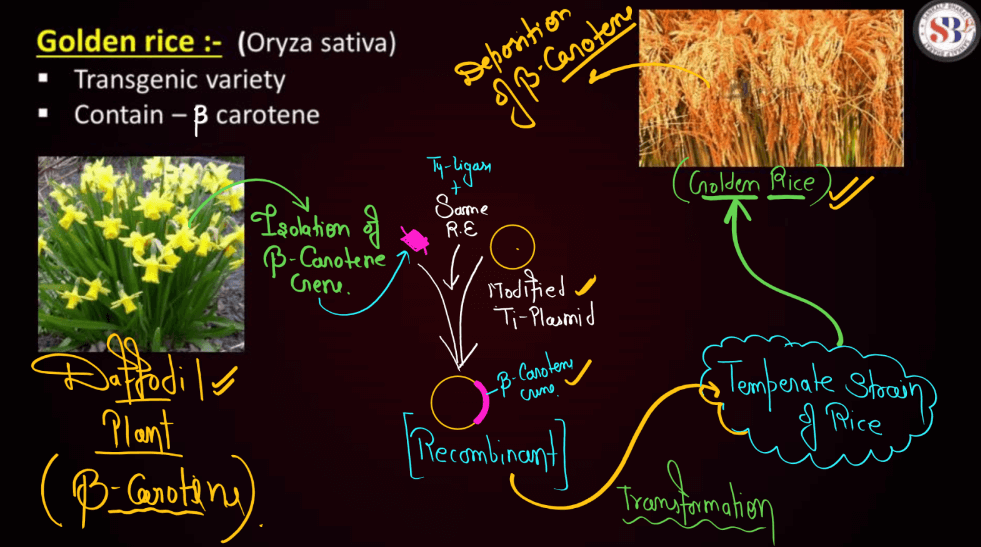
- Drought Resistant Crops: Genetic modifications to enhance water scarcity, promoting more resilient crops.
Application of Biotechnology in Medicine
Biotechnology plays a crucial role in medicine with applications ranging from drug development to personalized medicine. In summary, biotechnology in medicine enhances our ability to understand, diagnose, and treat diseases, offering innovative solutions for better healthcare outcomes.
- Drug Development: Accelerates the discovery and development of pharmaceuticals, allowing for more targeted and effective medications.
- Vaccines: Facilitates the creation of vaccines, aiding in preventing and controlling various infectious diseases.
- Gene Therapy: Offers potential treatments for genetic disorders by disorders by introducing, repairing, or replacing faulty genes.
- Diagnostic Tools: Provides advanced diagnostic techniques, such as DNA testing, to identify diseases at earlier stages and with higher accuracy.
- Stem Cell Therapy: Enables the use of stem cells for regenerative medicine, treating conditions like spinal cord injuries and degenerative diseases.
- Biopharmaceuticals: Produces therapeutic proteins, antibodies, and hormones using genetically modified organisms, improving treatment options for various medical conditions.
- CRISPR-Cas9 Technology: Facilitates precise gene editing, opening possibilities for correcting genetic defects and treating diseases at the genetic level.
- Tissue Engineering: Aids in the creation of artificial organs and tissues, addressing organs and tissues, addressing organ shortages, and providing solutions for transplantation.
- Personalized Medicine: Tailors treatments based on an individual’s genetic makeup, allowing for more effective and personalized healthcare.
- Synthetic Biology: Allows the creation of artificial biological systems, contributing to the development of novel therapeutic approaches.

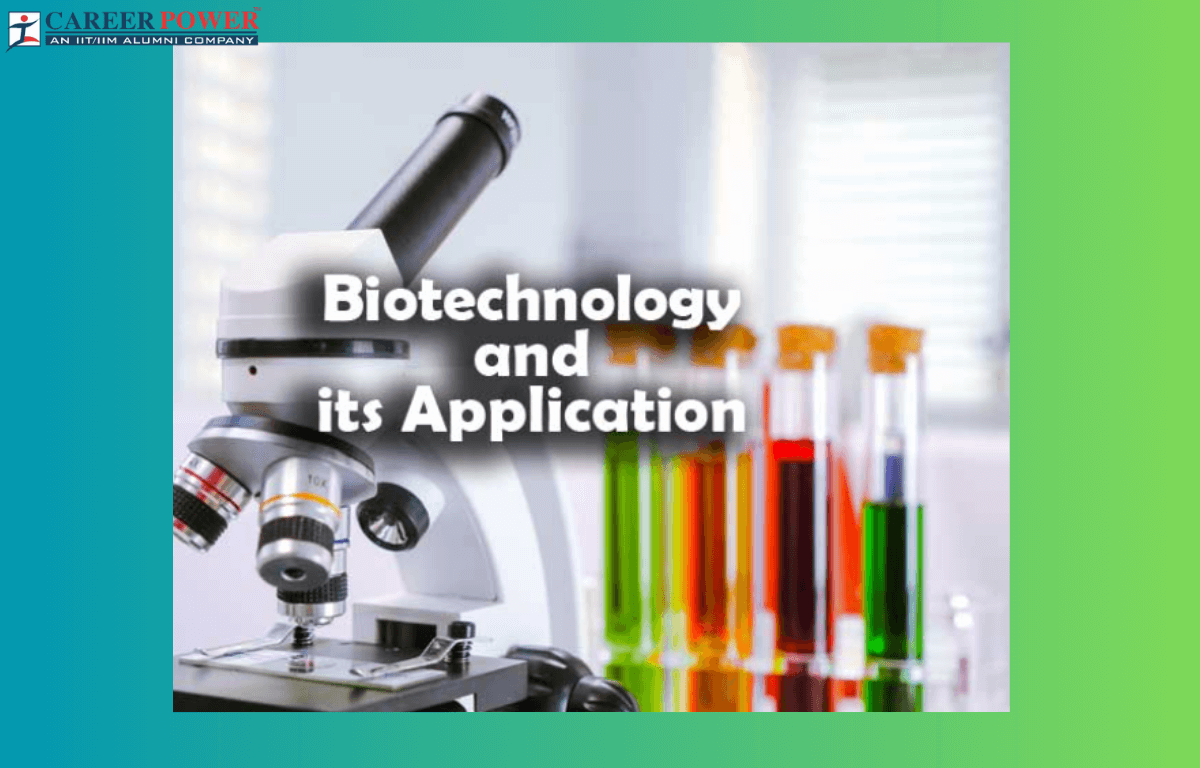

 50 Vegetables Name for Kids in English a...
50 Vegetables Name for Kids in English a...
 Food Chain: Definition, Types, Examples,...
Food Chain: Definition, Types, Examples,...
 Human Respiratory System: Definition, Di...
Human Respiratory System: Definition, Di...













